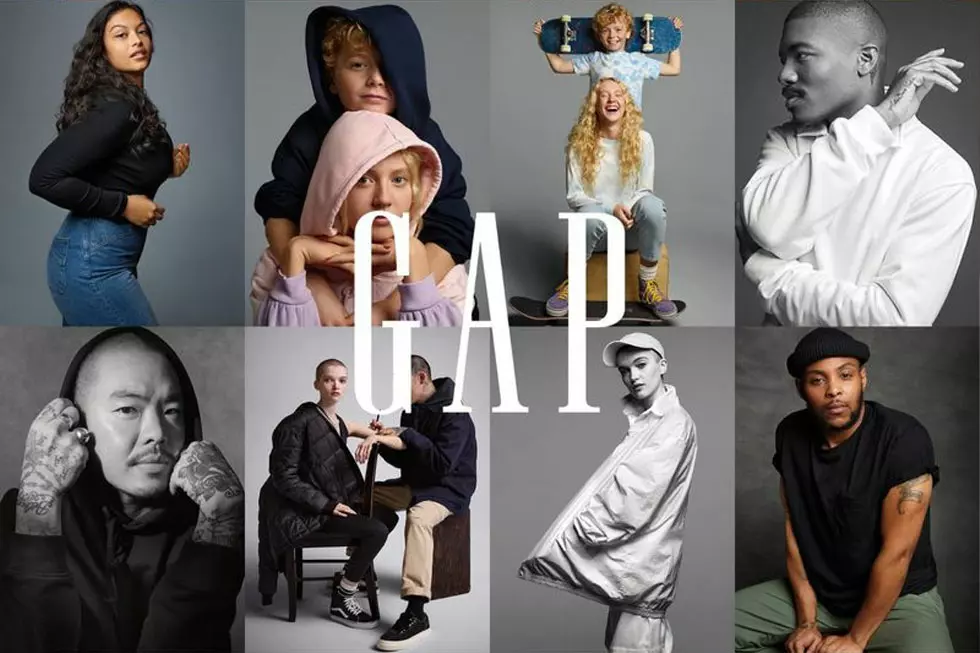What would the world look like if brands tried to represent the people they market to more genuinely? It’s a question that today’s business and marketing leaders have set out to answer. By building more inclusive brands, supported by more inclusive marketing, we can move beyond stale buyer personas and sales tropes and start making genuine connections with our diverse audiences.
Why marketers and businesses should care about inclusive brands
Inclusivity isn’t just about race, gender, or orientation; it’s about different worldviews and backgrounds coming together to tell relevant, authentic stories. It’s just one way for brands to break through the noise and create a genuine connection with their consumers.
Customers want to hear their stories and see their lived experiences represented by brands. In fact, a recent study conducted by Accenture found that 42% of ethnically diverse shoppers are more likely to switch to a brand committed to inclusion and diversity. And 41% of LGBTQ shoppers would switch to a business dedicated to inclusivity and diversity. Inclusive marketing isn’t a trend— it’s a movement.
There is now an expectation for inclusive marketing
Inclusive and diverse marketing is the future of marketing. It’s no longer “a nice to do” but a “need to do.”
Forbes Magazine offers up some predictions on future generations’ demographics and psychographics. “A 2019 study by CMO, Adobe showed that 61% of Americans think diversity in advertising is important.” Progressively, Gen-Z is 25% of the population and 48% diverse. The following generation, Generation Alpha, is proving to be even more varied than its predecessors.
Business is about the feeling of belonging. When people feel like they belong, they are loyal to your company. And when they don’t, they’ll go off and find another company that caters to and accepts them for who they are. You can tell the difference between a company that creates ads as an expectation or a core value. Continuity is everything.
The status quo is evolving, and companies need to pay attention to the changing market demands.
Why representation matters
Accenture’s research tells us that consumers from various backgrounds want to see their experiences and worldviews represented in marketing. But, it’s equally important to keep in mind that “diverse” doesn’t always mean “inclusive.”
As recently as 2019, Adobe conducted a research report of more than 2,000 consumers. Their results showed that 66% of African-Americans and 53% of Latino and Hispanic Americans feel their ethnicity is portrayed stereotypically in advertisements.
This shows an obvious disconnect between how marketers think about diversity and what audiences want to see. This is where inclusive brands come into play.
But be aware: today’s consumers can see through inauthentic marketing
It can be tempting to just “say the right things,” but just checking the diversity and inclusion box isn’t going to cut it. Studies show that today’s audiences are more hypercritical of advertising efforts, especially as they relate to representation. In fact, even as companies express their solidarity with social justice movements, accusations of “virtue signaling” are at an all-time high.
As the Harvard Business Review notes, “This is not a time for companies to share generic, hollow, or hypocritical sentiments. Doing so can ring inauthentic and like a publicity stunt instead of a genuine attempt at contributing to the conversation.”
Brands that got it wrong
You may have heard of some brand blunders that have occurred over the years due to cultural unawareness.
For example, Peloton’s 2019 Christmas advertisement, which caused a lot of backlash online and ended up costing the brand a loss of 1 billion in stock. A large portion of their audience was upset by the ad as it appears to support outdated gender stereotypes.
The now-infamous advertisement shows a woman receiving a Peloton bike from her partner Christmas morning. Thrilled by the gift, she records herself using the bike presumably every day for the following year. The next Christmastime, she presents the vlog-style recordings as a way of saying thank you to her partner.
People have gone as far as to call it sexist and dystopian. There are many aspects of this commercial to pick apart but let’s focus on the big one. The commercial didn’t recognize the current environment. Instead, the ad focused on an outdated trope of women needing to stay slim and fit for their partners.
Another notable brand blunder is from Cadillac’s 2016 advertisement about American cultural chauvinism.
Viewers from all walks of life found this commercial offensive. The basic premise is that only wealthy Americans who live in mansions can own a Cadillac. The commercial insults European countries’ way of life with a comment about how they take the whole month of August off.
While Cadillac’s brand revolves around being the pinnacle of luxury, one can’t help but wonder — luxury for whom?
Brands who are making strides in the right direction
It’s not always about getting it right, but making an effort and engaging in the conversations. Here are a couple of examples of brands that are making an effort.
Billie is a razor and shaving company designed for and by women. They have had a high success rate in their marketing strategy. They include women of all shapes and sizes with different body hair, saying loud and clear that, “Body hair is a personal choice. Shaving it, waxing it, or growing it are all valid, and all up to the individual.” Their marketing sometimes appears to push the envelope. But in reality, they are tackling a much-discussed topic of how men design women’s shaving products. They believe that prior shaving companies “showing smooth, hairless legs seemed like an archaic way of representing women.”
Another company that listened to their audience is Microsoft with this 2019 ad, “When Everybody Plays, We All Win.”
Their advertisement focused on a large portion of their audience, people with disabilities. Microsoft specifically paid attention to children with disabilities who couldn’t use the gaming controllers optimally and, in turn, created a controller that helped these kids play the best they could. They opened a channel of communication with a large group of people who have been overlooked.
Including more people from various backgrounds and cultures can resonate with your audience better; people who have shared experiences and cultural belonging can boost audience intimacy.
How do you practice inclusive marketing?
There isn’t a “quick fix” to creating a more inclusive brand; it’s an evolving process. But there are ways to start the process of inclusive marketing. It is by having an open door mindset. By hiring a culturally intelligent team, paying attention to what people are talking about, and having intentional conversations, you can reap the benefits of inclusive marketing.
Hire a culturally intelligent team
Effective and inclusive content marketing can be difficult without a culturally intelligent team. That means going one step beyond diversity. By weaving people of various backgrounds with different stories into the fabric of your brand, you can achieve more effective and powerful brand loyalty.
Pay attention to what people are talking about
It’s essential, now more than ever, to think critically, test marketing strategies, and practice Inclusive and Diverse marketing not just because it’s trendy but because it’s what future generations demand.
Through intentional effort, you can build a better brand, and Savy is here to help.
Diversity, inclusion, and belonging have become increasingly important to the customers we serve. They are all characteristics of an open door mindset. It’s easier to pick out a gift for someone who is your partner, best friend, or someone in your circle rather than a stranger. So when you’re creating an ad for your user base, you want to know and relate to them through the ad as if they are your friend. Brands need to develop a profound degree of intimacy with their audiences, experiences, and perspective.
Here at Savy, we understand that inclusive marketing is the only way forward in the future. And we’re excited to be part of this authentic movement.

